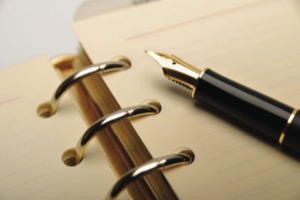
The holidays are coming to a close, I hope with happy memories. For many seniors, however, the year’s final days are sometimes tinged with sadness. We are forced to acknowledge another year has gone and with it several of the friends in our circle. This is especially stressful to senior LGBT community members who often lacked the family and outside support the younger crowd has today.
In many cases this resulted in making our fewer friendships extremely important to us especially for those in a small or unaccepting community. All this is visually made clear to me when I write my year-end cards. As I go through my address book, I am grieved by how many of the entries I look at and then skip. The pages seem as full as always, but the number of cards continues to dwindle. It seems this year more than ever.
It was not unusual to find a whole page filled with names, but I had only one card to write. I constantly tell myself to get a new book, but I never do. The reason is simple. Turning the pages provides a yearly chance to visit old friends (in alphabetical order yet) and re-live our times together. I give them a hello and tell them they are not forgotten. The first encounter is always a shock, but the trip down memory lane is unavoidable. Actually, with a tear or two, it cheers me up because I try hard to concentrate on what was and not what has gone.
I grant you this can be a difficult time of year, but don’t get a new address book. Use the one you have. With the right mindset, pause at the names and addresses; use them to acknowledge, reflect and rekindle past friendships and loves. At least do this once a year, don’t skip by them.
When New Year’s was a drag
Today’s usual end of the year parties, dinners and soirees, no matter how grand, would be hard to match the gay New Year’s Eve extravaganza known as Phil Black’s Ball way back in the dark ages of the ‘60s and ‘70s in Harlem. Phil was one of many popular female impersonators there and started a series of drag balls in his own club in 1945. They lasted for decades, but when new anti-gay laws were started in the ‘50s, they were restricted to Halloween and New Year’s Eve when cross-dressing as “costumes” was deemed legal (any other time both men and women were subject to arrest).
With only two nights a year to splurge, no expense was spared on the outfits, wigs, head-dresses, limousines in which one arrived to make a grand entrance or body-builders as naked as possible; one or two to escort or carry you in or maybe six or ten(!) to parade you around on an extravagantly decorated raised platform like the Pope.
A huge crowd lined the street to watch the arrival of the flamboyant attendees. In 1965 I was one of the crowd. The Academy Award’s red carpet treatment paled in comparison to the show I saw as each apparition tried to outdo the others in grandness and gaudiness. All was watched by dozens of police sternly guarding public morals against any hint of naughtiness.
Male drag was also popular with equally fantastic outfits and entrances. Often the gals teamed up with the guys as couples. The Harlem press covered the occasion, heavily referencing fairies and pansies. I wish I could remember more, but suddenly my friend noticed we were practically next door to the notorious 125 Street Baths. The rest of the night is a blur.











